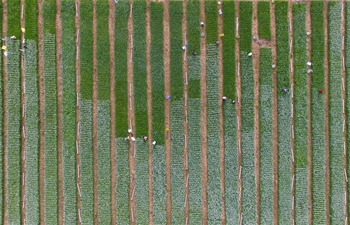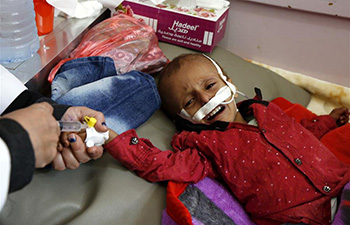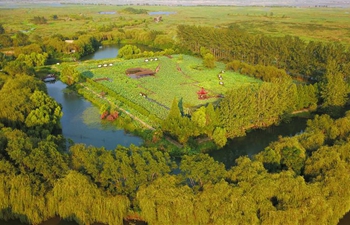WASHINGTON, Sept. 5 (Xinhua) -- Scientists have developed a technique to directly convert the cells in an open wound into new skin cells.
The study published on Wednesday in the journal Nature reported the approach that relies on reprogramming the cells to a stem-cell-like state.
It could be useful for healing skin damage, countering the effects of aging and helping people to better understand skin cancer.
"Our observations constitute an initial proof of principle for in vivo regeneration of an entire three-dimensional tissue like the skin, not just individual cell types as previously shown," said professor Juan Carlos Izpisua Belmonte from Salk Institute and senior author of the new paper.
"This knowledge might not only be useful for enhancing skin repair but could also serve to guide in vivo regenerative strategies in other human pathological situations, as well as during aging, in which tissue repair is impaired," said Izpisua Belmonte.
Cutaneous ulcers, wounds that can extend through multiple layers of the skin, are typically treated by transplanting existing skin to cover the wound. However, when the ulcer is especially large, it can be difficult for surgeons to graft enough skin, according to the researchers.
Izpisua Belmonte and his colleagues knew that a critical step in wound recovery was the migration of basal keratinocytes into wounds. These stem-cell-like cells act as precursors to the different types of skin cells.
But large, severe wounds that have lost multiple layers of skin no longer have any basal keratinocytes. Also, even as these wounds heal, the cells multiplying in the area are mainly involved in wound closure and inflammation, rather than rebuilding healthy skin.
The researchers tried to directly convert these other cells into basal keratinocytes, without ever taking them out of the body. They first compared the levels of different proteins of the two cell types (inflammation and keratinocytes) to get a sense of what they'd need to change to reprogram the cells' identities.
They pinpointed 55 "reprogramming factors" that were potentially involved in defining the distinct identity of the basal keratinocytes. Then they narrowed the list down to four factors that could mediate the conversion to basal keratinocytes.
When the team treated skin ulcers on mice with the four factors, the ulcers grew healthy skin, known as epithelia, within 18 days, according to the study.
Over time, the epithelia expanded and connected to the surrounding skin, even in large ulcers. At three and six months later, the generated cells behaved like healthy skin cells in a number of molecular, genetic and cellular tests.
The researchers believed that plastic surgery to treat large cutaneous ulcers, including those seen in people with severe burns, bedsores or chronic diseases such as diabetes, may someday be a thing of the past.

















